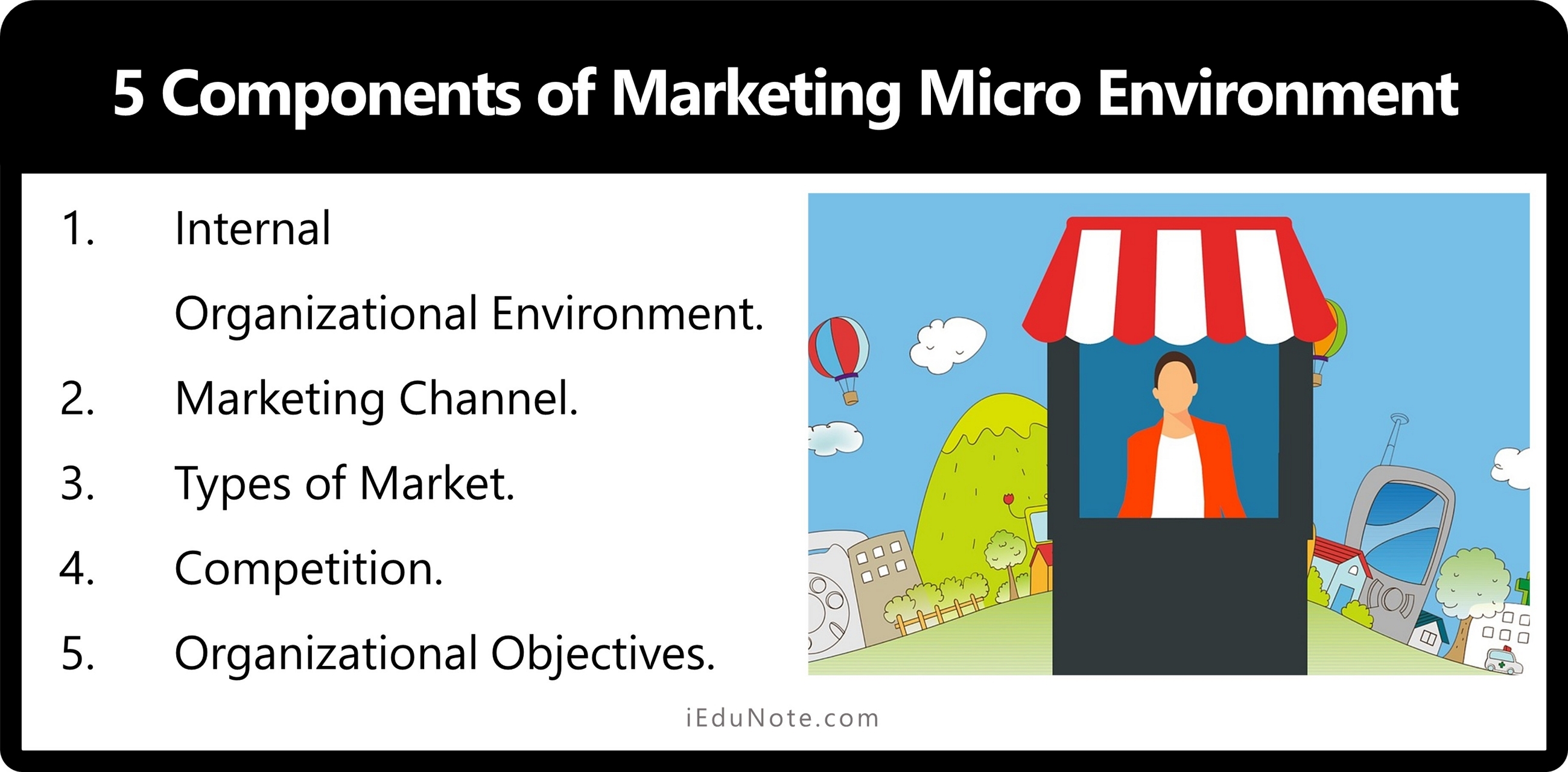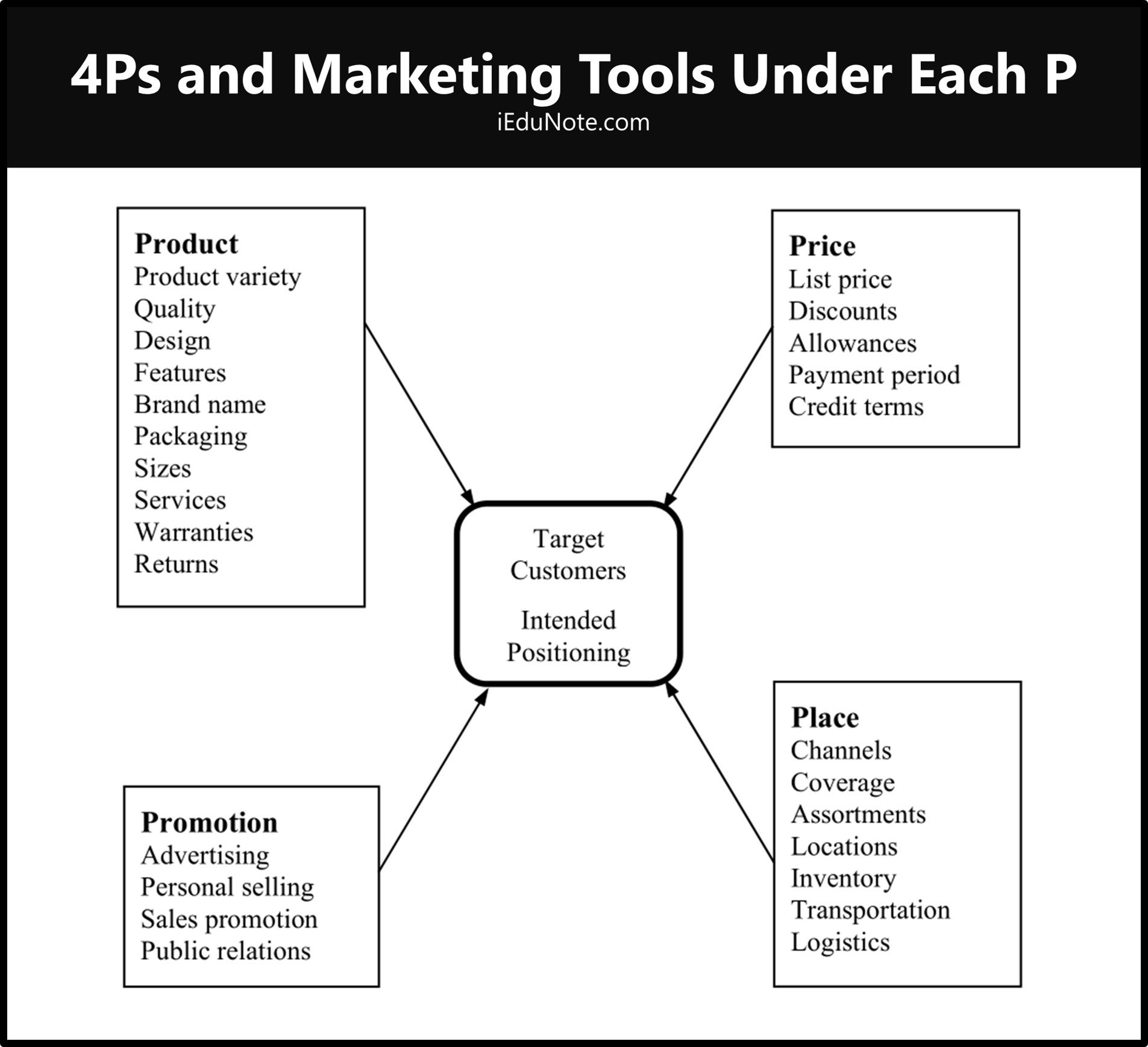A company’s marketing environment is composed of the people, institutions, and forces outside marketing that influence marketing management’s ability to develop and maintain a successful relationship with its target customers.
Constantly watching and adapting to the changing marketing environment is important because the marketing environment offers both opportunities and threats.
For example, an alliance with the supplier and distributor may help an organization get a competitive edge over its rivals.
On the other hand, the entry of many competitors poses a threat to the organization as some of their customers may shift to a new seller.
The company can revise and adapt marketing strategies to cope with new market challenges and opportunities by conducting a regular and systematic environmental analysis.
The marketing environment is the combination of the microenvironment and macro environment.
According to Philip Kotler, “A company’s marketing environment consists of the internal factors & forces, which affect the company’s ability to develop & maintain successful transactions & relationships with the company’s target customers.”
According to Pride &Ferrell, “The marketing environment consists of external forces that directly or indirectly influence an organization’s acquisition of inputs and generation of outputs.”
To sum up, the marketing environment is a set of diverse, dynamic, and uncontrollable forces that impinge on an organization’s marketing operations and opportunities.
Let’s look at this chart that shows the micro (internal) and macro (external) elements of the marketing environment.

Macro Environment of Marketing
Macro environment factors consist of external forces. These external factors influence the company’s marketing strategy is a great length.
The external environmental factors are uncontrollable, and the company finds it hard to tackle the external factors.
Elements of the macro-environment of marketing are;
- Demographic factors.
- Economic factors.
- Natural forces.
- Technology factors.
- Political factors.
- Cultural factors.

In the following ways, they affect business strategy.
Demographic Environment
Demography is the study of human populations in terms of size, destiny, location, age, gender, race, occupation, and other statistics.
These is the very important factors that help the marketer divide the population into different market segments and target markets.
Demographic data also helps in preparing geographical marketing plans, and age, and sex-wise plans.
Economic Environment
Economic Environment is those macro factors that affect consumer buying power and spending patterns.
It includes the level of income, policies, and nature of an economy, economic resources, trade cycles, and distribution of income and wealth.
When the income of a family or country (per capita income) changes, it also changes the buying behavior and spending pattern of the family or country.
Natural Environment
The natural environment involves the natural resources that are needed as inputs by marketers or they are affected by marketing activities.
So marketers should be aware of several trends in the natural environment.
Technological Environment
Technological forces are perhaps the most dramatic forces which are changing rapidly. These macro-environmental forces create new products, new markets, and marketing opportunities for marketers.
Political Environment
It includes government actions, government legislation, public policies, and acts that affect the operations of a company or business.
These forces may affect an organization on a local, regional, national, or international level.
So marketers and business management pay close attention to the political forces to judge how government actions which will affect their company.
Cultural Environment
Cultural factors in heritage, living styles, religion, etc., also affect a company’s marketing strategy. Social responsibility also became part of marketing and slowly emerged in marketing literature.
Socially responsible marketing is that business firms should take the lead in eliminating socially harmful products.
Micro Marketing environment

The micro-environment refers to the forces that are close to the company and affect its ability to serve its customers. It influences the organization directly.
It includes the company itself, its suppliers, marketing intermediaries, customer markets, competitors, and the public.
5 components of the microenvironment of marketing are;
- Internal Organizational Environment.
- Marketing Channel.
- Types of Market.
- Competition.
- Organizational Objectives.
Internal Organizational Environment
The first is the organization’s internal environment—its several departments and management levels as it affects marketing management’s decision-making.
Marketing Channel
The second component includes the marketing channel firms that cooperate to create value: the suppliers and marketing intermediaries (middlemen, physical distribution firms, marketing-service agencies, and financial intermediaries).
Types of Market
The third component consists of the five types of markets in which the organization can sell: the consumer, producer, reseller, government, and international markets.
Competition
The fourth component consists of the competitors facing the organization.
Organizational Objectives
The fifth component consists of all the public that have an actual or potential interest in or impact on the organization’s ability to achieve its objectives: financial, media, government, citizen action, and local, general, and internal publics.
Differences between the Macro and Micro Environments of Marketing
Micro and macro refer to economic environments within which marketing takes place.
Though not exactly opposites, broad differences exist between macro marketing and micro marketing.
The differences between macro environments and micro-environments may be relevant to identify in the following table:
| Point of difference | Macro-environment | Microenvironment |
|---|---|---|
| Meaning | External environment of an organization. | Inter environments of an organization. |
| Nature | Very complex. | Less complex to perceive. |
| The task of the marketer | Marketer interacts with, the elements prevailing outside the organization. | The marketer interacts with other functional areas of the organization. |
| Extent of control | Factors remain beyond the control of marketers. | Factors may be controlled to a large extent by a marketer. |
| Impact | It creates a huge impact on shaping marketing decisions. | Remains comparatively independent are shaping marketing decisions. |
| Function | Factors may create an opportunity or pose a threat to the marketing activities of an organization. | Factors reveal the capabilities of an organization to exploit the opportunities or to combat the threat through its marketing activities. |
How do environmental factors affect the consumer decision process?
Economic factors
Economic factors play an important role in consumer buying behavior decisions. It also directly affects the purchasing power of consumers.
If consumers’ purchasing power is weak, they cannot decide to buy goods or services even if they like them very much.
But, if they have purchasing power, they can promptly decide to buy goods or services they like.
Income level, the income of their family members, liquid assets, spending attitude, credit facility, etc., are the economic factors in determining consumers’ buying decisions.
Technological factors
Technological forces are perhaps the most dramatic forces which are changing customer habits by introducing a new product for the customer.
Cultural factors
Culture is crucial when it comes to an understanding an individual’s needs and behaviors. Throughout his existence, an individual will be influenced by his family, his
friends, his cultural environment, or society that will “teach” him values, preferences, and common behaviors to their own culture and buying behavior.
Demographic factors
Demography is the study of human populations in terms of size, destiny, location, age, gender, race, occupation, and other statistics. This is very important because these factors directly influence consumer decision-making.

